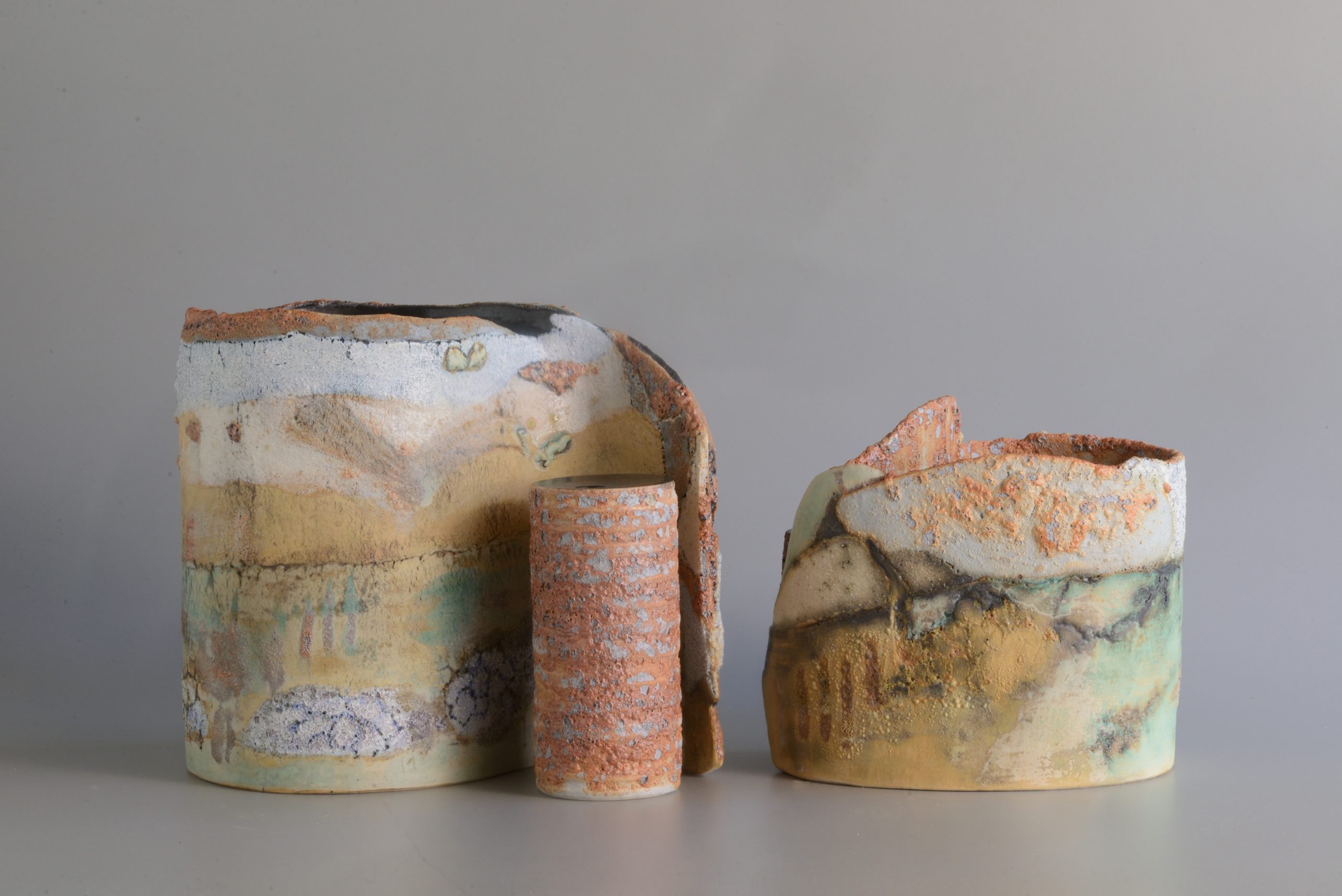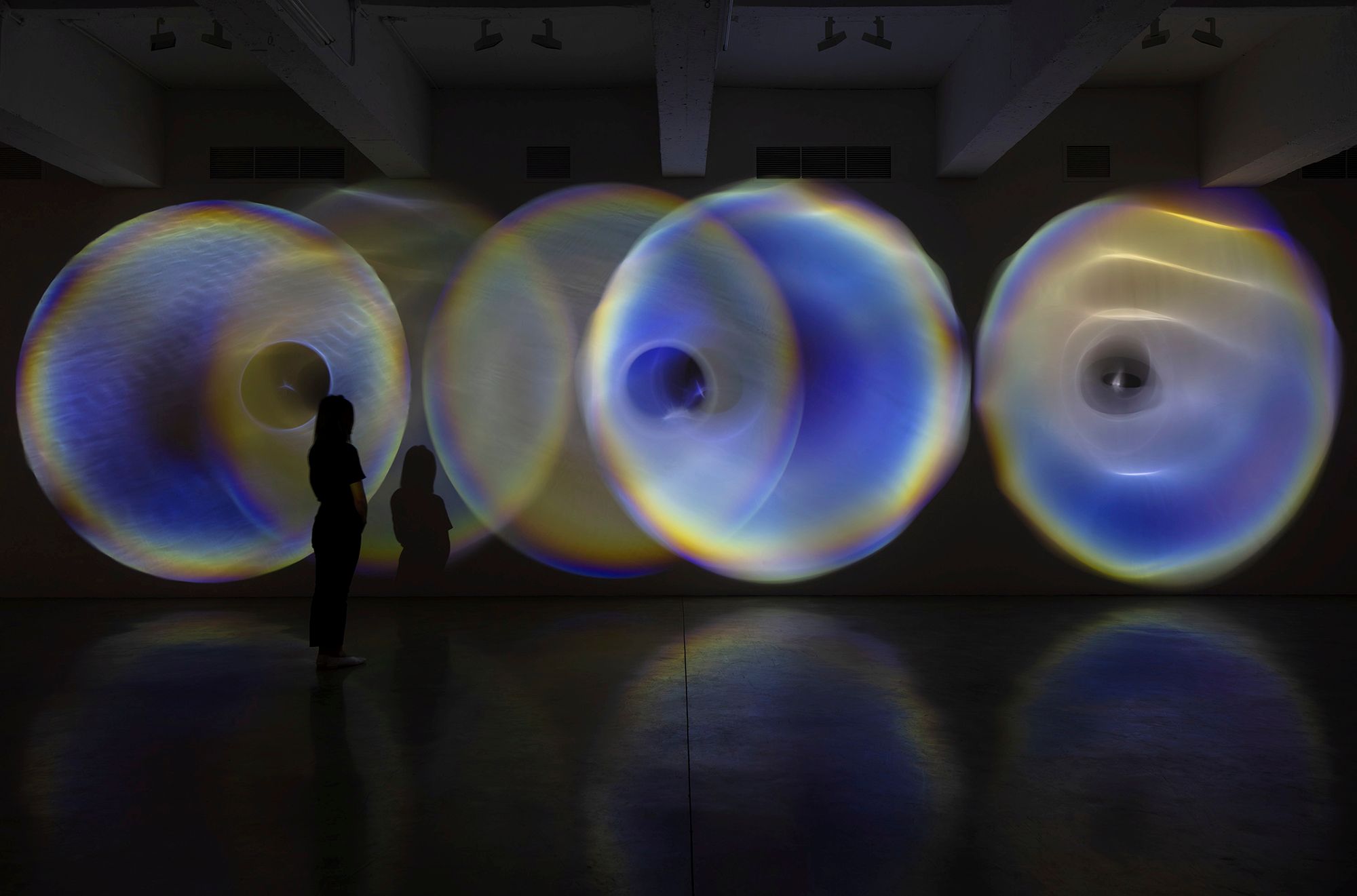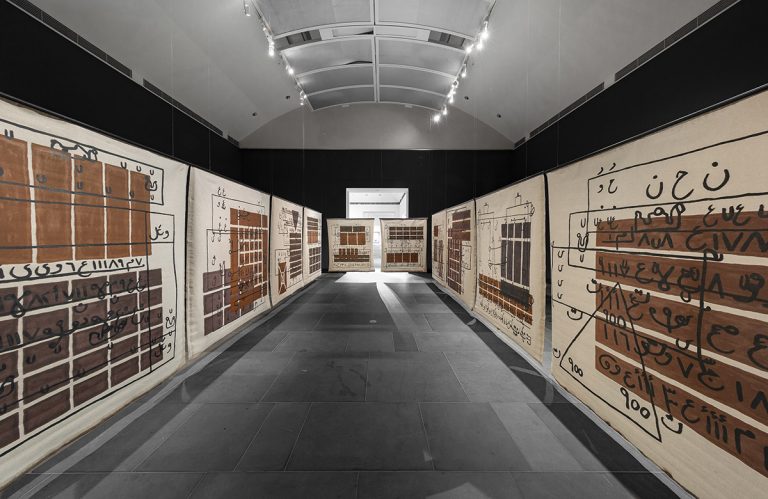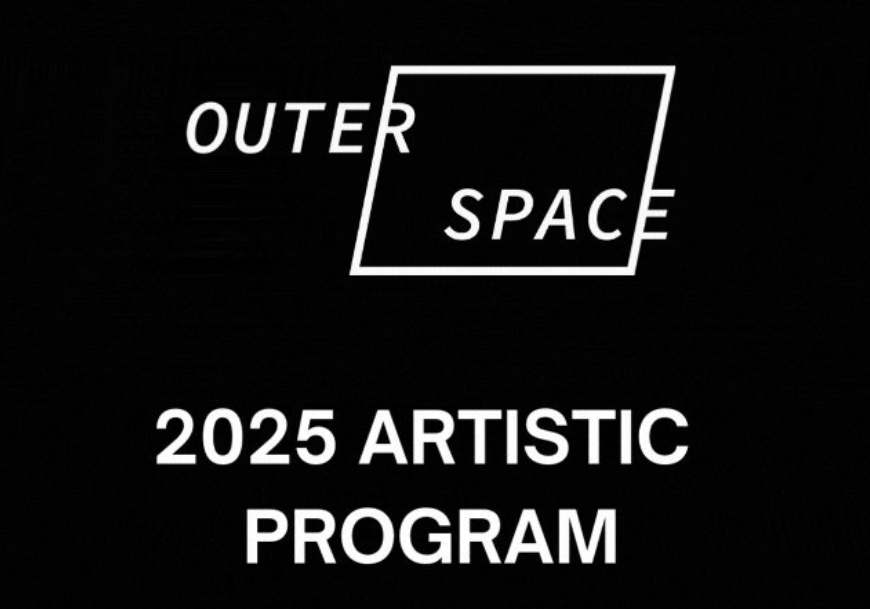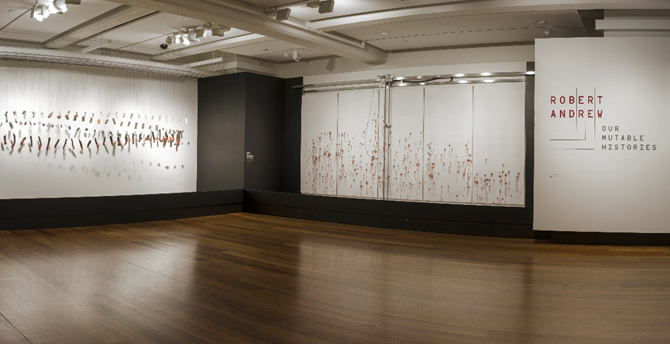
Entering into Robert Andrew’s exhibition “Our mutable histories” at Museum of Brisbane, I am immediately confronted with a warping mechanical sound. This is coming from Andrew’s most recent work, “Data Stratification.”
Combining the sleek aesthetic of modern technology with natural materials, Andrew has developed a number of kinetic installations which speak of his Indigenous Australian history. Having descended from the Yawuru people of the Rubibi (Broome) area West Kimberley in Western Australia, Andrew generates work which questions the broader context of European colonisation in a way which is commanding and yet somewhat subtle.
Commissioned and meticulously built for the space, the work is comprised of a small TV screen displaying a definition of a Yawuru word with its English translation. I read the word “Buru Jara” with its English translation “Me and Your Land, World”.
My eyes can’t help but feel transfixed by the mechanical component of the work which moves hypnotically like an ouija board. The machine works within a Cartesian system relying on the text displayed on screen to generate a programmed movement responsible for the puppet mastery of materials.
Each string in the mechanical grid threads up along the ceiling to correlate with four rows of natural materials. The materials consist of small irregular grey rock; shards of mother of pearl tied in a tight bunch; rigid tile shaped rocks rubbed with ochres and natural pigments; and small chunks of charcoal branches dipped in a red ochre.
I am taken with the slow movements of the materials. I watch the strings draw and ease out tension which orchestrates an ever-changing choreographed dance, layering shadows and shapes in a way which is completely captivating.
I sit and contemplate Andrew’s selection of materials and I take in this concept of Buru Jara.
The use of text and language plays an important role within Andrew’s practice as a tool for critiquing colonisation. Through this work, Andrew is educating the audience on a vocabulary that most Australian’s are not aware of. By using text within his art practice, Andrew reclaims a medium which has dominated cross cultural interaction within the process of colonisation and brings to light the significance of Indigenous language by acknowledging words that have become lost in their English translations.
What gives this work its strength is its ability to communicate the richness and connection that is lacking in text through the authority and communicative dimension of materials. Instead of show casing these objects in a traditional glass case museum context, Andrew gives these objects the performative power to tell their own history, responding to the coded movement of each Indigenous phrase or word.
This shift in authority speaks heavily to past misrepresentation of Indigenous history within Museum culture. Bordering on an institutional critique, Andrew presents these objects from an Indigenous perspective. Through the hypnotic and gradual movement, Andrew provides the audience with space to contemplate the significance and history of these materials belonging to a culture rich in a connection to place and land.
It should also be noted the striking juxtaposition of combining traditional and earthly materials with the modernity of 21st Century technology. Andrew utilises this combination of old and new in relation to his own mixed heritage, generating a new way in which to approach cross cultural connection.
This is also evident on the far wall, another sound spits and spatters like a sprinkler starting up, rapidly delivering a message in a morse code like fashion. This work, “Ground Up”, is another mechanical installation which sees large white panels covered in chalk beginning to reveal their secrets.
Andrew has designed this work to play upon the tension of revealed and concealed histories. Timing on a palmisphet system, the machine squirts small sprays of water which in turn, wet the chalk background and reveal text written in natural ochres.
The machine appears to pick a spot at random, changing from high to low and only reveals a few small splotches at a time. Each sprayed section mimics the effect of wood weevils, dribbling and scribbling into the background.
At my time of viewing, only a few letters are revealed and I imagine being able to read more as time progresses, adding incentive to come back and experience this work again.
The tension between revealing and concealing weaves through Andrew’s body of work as a crucial process and conceptual concern most effectively achieved through this kinetic process. The work also relies on time as a key element to its durational aspect, slowly introducing the audience to a seriousness at the core of Andrew’s practice.
The last installation, “White Wash Over The Burn”, is a static sculptural assemblage on the wall. This piece stands to anchor the movement of the kinetic installations, reiterating the personal connection Andrew has to investigating his own cultural identity.
The use of his own fence palings conjures up the great Australian dream to own a house. Andrew contrasts this aspirational concept by burning words exchanged between the artist and his grandmother into the white washed palings.
The patina reflects layers of history revealing the wooden origins of the fence, kindling thoughts of the land and connections to place. Through the process of burning, Andrew makes us think about our past and the pain of genocide, displacement and disregard experienced as part of our colonial history.
This piece particularly echoes the silenced and white washed history that is only just beginning to be heard and acknowledged. The quiet authority of the exhibition reflects within the title “Our mutable histories” as Andrew challenges through the communicative power of materials, mechanical revealing processes and text, the story of our collective Australian and personal histories.
Written by Ally McKay
References:
Museum Of Brisbane, 2017. Robert Andrew: Our mutable histories, accessed 21/03/2017
Robert Andrew, 2015. Recalibrating Country, accessed 20/03/2017
Image: Installation view, Robert Andrew, Our mutable histories, Photograph Carl Warner.
Essay written for the exhibition Robert Andrew: Our mutable histories′ showing at Museum of Brisbane (3rd March – 16th July, 2017).

